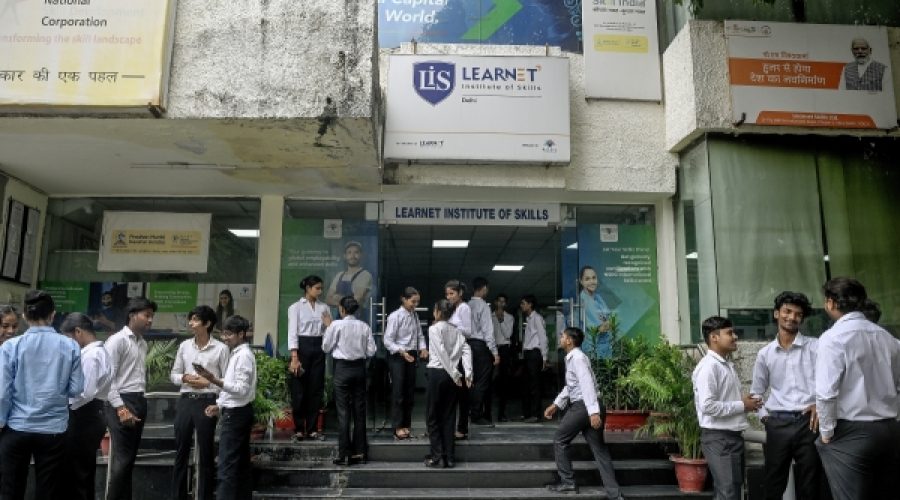India’s Most Valuable Export: How Tens of Millions of Workers are Driving Global Business Opportunities
India is witnessing a growing movement across its government and business sectors to export more workers abroad, addressing the imbalance between its vast labor force and limited domestic employment opportunities. While many countries face labor shortages and have more jobs than workers, India’s challenge is to connect its surplus young workforce to these markets, a strategy economists refer to as labor mobility.
The Indian government is actively working to facilitate this process amidst rising global resistance to immigration. On October 9, India’s Ministry of External Affairs unveiled draft legislation for an Overseas Mobility Bill, intended to replace the Emigration Act of 1983. The proposed bill aims to better link Indian workers to the global job market, ensuring their safe, orderly return and smooth reintegration upon coming back.
Over the past six years, India has quietly inked labor mobility agreements with at least 20 countries across Europe and Asia, including the Persian Gulf region. These countries, generally developed economies with limited tradition of employing Indian workers, are now seen as key partners in this initiative.
Among hopefuls is Vanlal Peka, a 21-year-old from Mizoram, who is preparing to work as an auto mechanic in Japan through a new visa aimed at semiskilled workers. He studies Japanese at the Furusawa Academy in New Delhi, illustrating the growing interest among Indian youth in pursuing opportunities in countries with shrinking populations and labor shortages.
This movement is gaining momentum especially as the United States, a traditional destination for skilled Indian workers, tightens immigration policies. The Trump administration’s restrictions on the H-1B visa program have made it more difficult for students and less-skilled workers to enter the U.S. workforce.
Institutions like the Learnet Institute of Skills, a collaboration with India’s National Skill Development Corporation, are training young Indians in hospitality, business management, and languages such as Japanese and German to prepare them for international employment. For example, 18-year-old Aradhana David aspires to work in Japan’s healthcare sector, planning to apply through a technical intern training program, while also hoping to pursue side interests like creating a YouTube channel.
The core challenge remains convincing host countries that this migration is temporary and beneficial rather than a permanent replacement for native labor. Many migrants develop strong ties abroad, often wanting to settle and build their lives in host countries – complicating the concept of return and reintegration back to India.
Demographic trends in aging developed economies—which are seeing population declines in countries like Italy, Russia, and South Korea—underscore the pressing need for migrant workers. A Boston Consulting Group study projects a global shortfall of 45 to 50 million workers by 2030, a sharp rise from 5 million in 2023.
The Global Access to Talent From India Foundation (GATI), a New Delhi-based think tank, envisions India doubling its annual worker exports from 700,000 to 1.5 million by 2030 to fill these gaps. Arnab Bhattacharya, the foundation’s CEO, stresses that India’s workforce should serve the global economy, not just its domestic market.
India faces a significant challenge with underemployment; many young workers remain unable to secure skilled jobs despite rapid economic growth. Since the COVID-19 pandemic, approximately 50 million Indians shifted from services or manufacturing back to agriculture, signaling setbacks in workforce development.
Germany and Japan are emerging as key destinations for Indian workers, offering pathways into broader European and East Asian markets, respectively. Recent agreements with countries like Finland and Taiwan further diversify options. English-speaking countries such as Canada, the United States, Australia, and Britain continue to facilitate Indian skilled worker entry through existing channels without requiring new government support.
Ideally, Indian migrants will undertake temporary work assignments spanning three to five years without changing citizenship, enabling host nations to address workforce shortages while India benefits from remittances—currently around $135 billion annually—and the return of skilled workers with enhanced expertise.
At a December India-Japan forum, Foreign Minister S. Jaishankar prioritized labor mobility exchanges above defense cooperation and supply chain issues. August saw the launch of a program expected to send up to 50,000 Indian workers to Japan annually.
Nevertheless, political resistance persists globally. The Trump administration’s prioritization of deportations and the introduction of a $100,000 fee for the H-1B visa program reflect growing restrictions. Similar political currents challenge migration policies across Europe and Japan, regions where migrant labor needs are greatest.
Germany’s ambassador to India, Philipp Ackermann, acknowledged the need to improve public acceptance of legal migration while combating illegal immigration. He emphasized the importance of robust outreach to attract Indian workers, many of whom speak English and Hindi but not German.
Among the new generation preparing for overseas work is 20-year-old Ritesh Jagra, studying operating room procedures at Learnet. While he has yet to start German classes, he is optimistic, inspired by social media suggesting opportunities to work in Germany may soon open.
This report originally appeared in The New York Times.
Special Analysis by Omanet | Navigate Oman’s Market
India’s expanding labor mobility initiative represents a strategic opportunity for Oman to tap into a vast pool of skilled and semi-skilled workers amid global labor shortages. Smart investors and businesses should consider forging partnerships and adapting workforce integration policies to benefit from this influx while navigating potential political sensitivities around migration. Embracing this trend could enhance Oman’s economic resilience and innovation capacity in a competitive global market.



